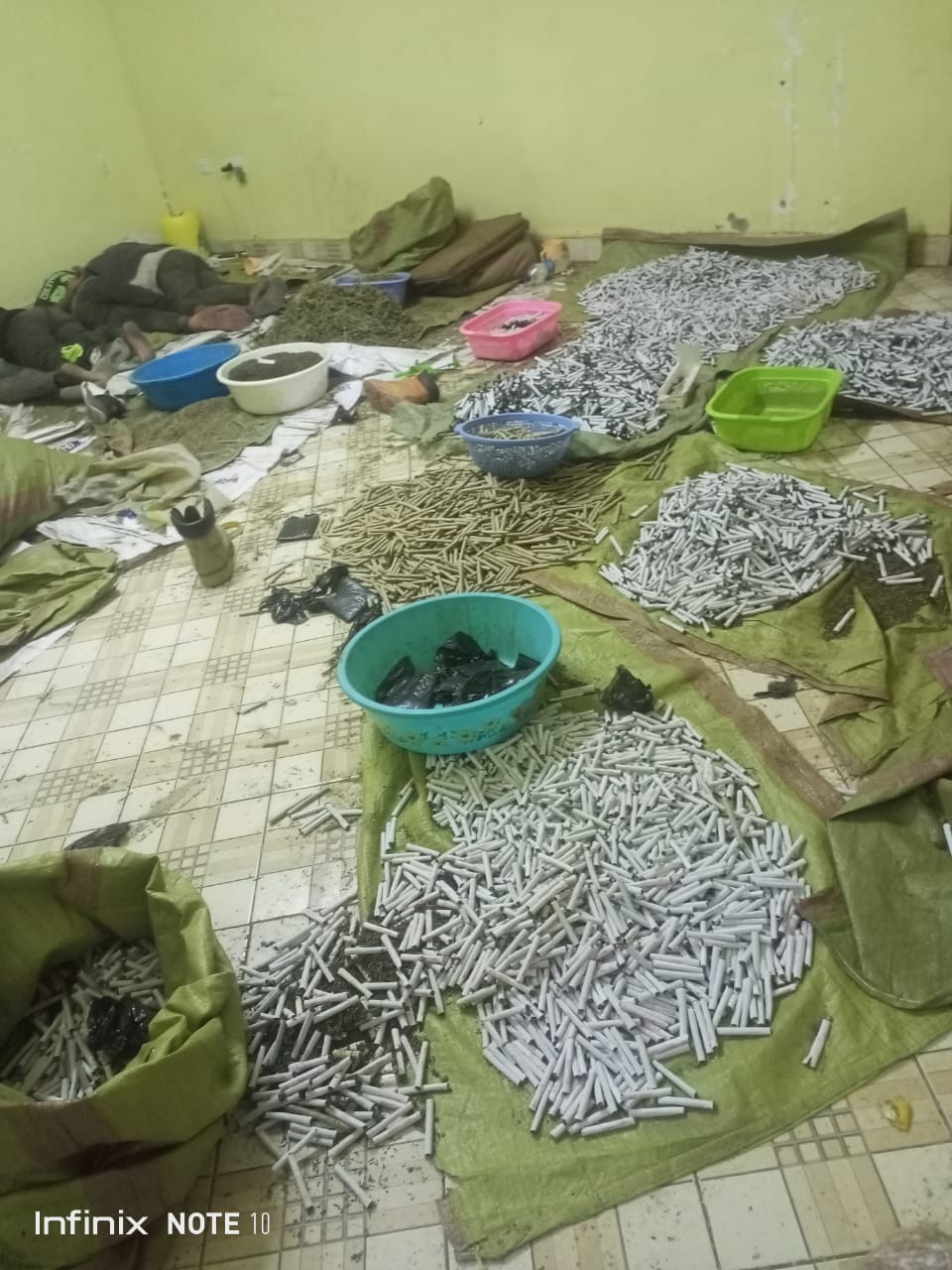
Twelve suspects were arrested in a police operation and more than 500 kilograms
of marijuana recovered in Wajir and Nakuru Counties.
The value of the drugs is believed to be more
than Sh10 million, police said.
Among those nabbed was a 50-year-old woman, police
added.
The drugs are believed to have originated in neighbouring countries before being shipped to the hideouts for repackaging and
subsequent planned distribution.
In Wajir, four suspected drug traffickers were arrested by police based in Wajir North, and a 10-kilogram pack containing Marijuana was seized from their vehicle.
The arrest and subsequent seizure followed the interception of a vehicle the four were travelling in.
It is believed that the four were making their way back home having distributed more bales around the County.
They were all booked at Bute Police Station pending processing and arraignment on Monday, February 17.
In Elmentaita, Nakuru County, police raided a home in the Pakawa area and recovered 497 kilograms of marijuana.
Eight suspects were found processing the product and detained.
Police said there were 21 sacks of marijuana in the house.
The marijuana was being repackaged for the market. This is the latest such operation in days as police fight to contain the menace of drug trafficking and consumption.
Police have been mounting operations targeting
traffickers and consumers. This has not deterred the gangs behind the trend.
A recent study on universities showed friends were the main (66.4 per cent) sources of drugs followed by canteen/bar/premises within the neighbourhood (59.3 percent); fellow students within the institution (56 percent); online purchasing over websites or social media (39.4 percent); canteen/bar/premises within the institution (28 percent); support/non-teaching staff (11.4 percent); and lecturers/teaching staff (7 percent).
Almost half of university students in Kenya have used a drug or substance of abuse in their lifetime.
About 20 per cent, one in every five university students, have ever used at least one type of tobacco, while 1 in every 7 university students (13.4 per cent) have smoked cigarettes.
Nacada also revealed that 10.9 per cent have used shisha, 8.6 per cent on e-cigarettes, nicotine (4.6 per cent), and snuff/chewed tobacco 4.1 per cent).
Also, 1 in every 6 university students (18 per cent) had ever used at least one type of cannabis in their lifetime while 1 in every 7 university students (14.9 per cent) had smoked cannabis.
The study covered both public and private universities across all the 8 administrative regions of the country.
“A total of 17 universities were included in the study. The study population comprised undergraduate students from both public and private universities in Kenya. A total of 15,678 respondents were interviewed translating to a response rate of 99.7%,” the national anti-drugs agency said.
Over half (54.2 per cent) of the student population were male and 45.2 per cent were females while 0.6 per cent did not state their sex.
Most (61.7 per cent) of the students were accommodated outside the institution.
According to the study, there was evidence of involvement and use of university students in the supply and sale of DSA, and increasing use of online platforms and websites for promoting the sale and use of such drugs targeting university students.

















